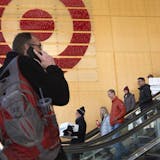Now that the Gophers have begun the regular season in full force, it's high time we take a look at the NCAA's new fouling rules and look at what everyone thinks of them so far, and how they are affecting Minnesota.
There are two major changes in officiating (and thus, in the way teams play) that you can expect to see this year.
The first regards blocks and charges; the second deals with defending the player with the ball.
Many of you may be familiar with these already – and may have noticed a change in what is being called through the first two games. But let's review.
First, the block/charge rule: Now, the defender must be in legal guarding position as soon as the offensive player begins his upward motion to pass or shoot – rather than at the moment of contact. The idea here to improve the accuracy of block/charging calls, some of the more controversial in the sport.
The second change ultimately creates more touch fouls. New fouls that will be called include:
- Placing and keeping a hand/forearm on an opponent.
- Placing two hands on an opponent.
- Continually jabbing by placing a hand or forearm on an opponent.
- Using an arm bar to impede the progress of the dribbler.
The new rules come on the heels of a season of college basketball that churned out an all-time low in fouls called and – probably not coincidentally – historic scoring lows as well (lowest since 1951-52). The ultimate goal of the NCAA with these new rules, then, is to increase scoring and create a less physical and more exciting game.
And so far, it's working. Fouls, you probably could guess just from watching the games are up. Last year, Division I teams' free-throw attempts to field-goal attempts (FTA/FGA) averaged out to 35.9 percent according to Kenpom.com. This year, teams are averaging a whopping 43.1 percent FTA/FGA through the first few days (through Wednesday's games), a substantial increase.



